PenTile RGBG matrix technology explained
Samsung's Pentile matrix technology is a sub-pixel design architecture family. The basic PenTile structure is the RGBG matrix. In RGBG PenTile displays there are only two subpixels per pixel, with twice as many green pixels than red and blue ones. You can see a PenTile matrix vs a Real-Stripe one on the images below (the PenTile is on the right):
The Pentile technology was commercialized by Clairvoyante. In March 2008, Samsung bought the company's PenTile related IP and technology, and formed a new company called Nuovoyance to continue development of this display technology. Here's an image from Nuovoyance showing Pentile vs RGB matrix (which they call a 'legacy' matrix):
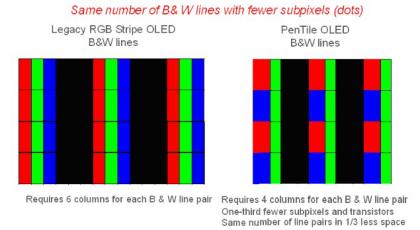
PenTile relies on the human eye design - if you reduce the number of blue subpixels, you barely reduce the image quality. There are other advantages to PenTile displays (for example longer liftime, which will be explained below). But even Samsung admits that a real-stripe RGB matrix is better than Pentile, for example here's some marketing image from Samsung showing how a non-Pentile display (the Super AMOLED Plus) is better than the pentile Super AMOLED:
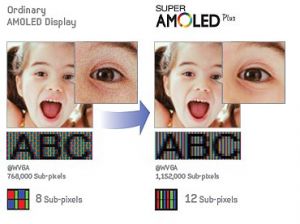
Some people indeed do not like PenTile displays. Mostly it seems because there is a visible pattern when you look at the display up close. Your eyes get used to this pattern quickly though, and the higher resolution the display is, the less visible the pattern is. Modern PenTile OLED displays reach very high pixel densities that make it virtually impossible to notice the patern.
Samsung's AMOLED and Super AMOLED displays
Samsung uses PenTile technology in virtually all of their Super AMOLED displays, which are used in most of the company's smartphones - including the Galaxy S7 and S7 edge.
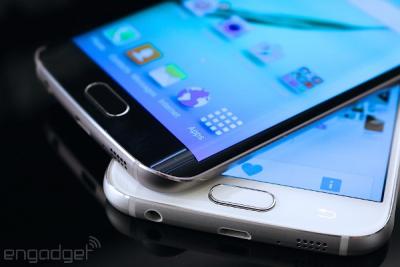
Diamond Pixel Pentile
Samsung's latest Super AMOLED displays adopt a new subpixel arrangement called Diamond Pixel. The first phone to use this pentile type was the Galaxy S4 (later phones adopted a slightly different Diamond pattern). In a Diamond Pixel display, there are twice as many green subpixels as there are blue and red ones, and the green subpixels are oval and small while the red and blue ones are diamond-shaped and larger (the blue subpixel is slightly larger than the red one). The diamond shapes were chosen to maximize the sub-pixel packing and achieve the highest possible PPI. The greens are oval because they are squeezed between the larger red and blue ones.
![]()
Pentile displays last longer
One of the advantages of PenTile displays is that they last longer. In fact today this is one of the major reasons Samsung are using PenTile for high-resolution (over 230 ppi) OLEDs. Read here for Nuovoyance (Samsung's company in charge of PenTile) explanation.
Further reading
The latest Pentile news:
Rumors surface on a Galaxy SIII with a Super AMOLED HD and an OLED iPhone
Samsung's Galaxy S II is just starting to appear in the US, and it's already time to start speculating on its successor - the S III. According to an anonymous user in a message board, the S III will have 2 Ghz quad-core processor, the latest Ice Cream Sandwich OS, a 10mp camera, NFC and 1080p 60 fps video. But we're mostly interested in the display - a 4.65" Super AMOLED HD display offering a strange 1280x1024 resolution (352 ppi?).
These specs seems very optimistic, especially the display. The first Super AMOLED HD device, the Galaxy Note phone has a 1280x800 resolution on a 5.3" display (using PenTile technology). This means that Samsung will need to improve the ppi quite a bit. And the 1280x1024 resolution doesn't really make sense, does it?
Samsung launches the 7.7" Super AMOLED tablet and the 5.3" HD Super AMOLED phone
Samsung launched three OLED products today, two of which are very exciting. The first is the Galaxy Tab 7.7, which has the world's largest mass-production OLED display at 7.7" (1280x800). It's a Super AMOLED Plus display. Other include Android v3.2, Dual-core 1.4Ghz processor, HSPA+ radio, 16GB to 64GB internal storage and a microSD slot, Wi-Fi, GPS and two cameras (3MP and 2MP).
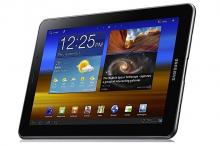
The second exciting product is the Galaxy Note, a 5.3" Super AMOLED phone, offering the same resolution as the Tab - 1280x800. Samsung is using PenTile here. They are not using the Super AMOLED HD brand we thought they'd use, istead they simply call it a HD Super AMOLED display. It seems that Samsung will use Super AMOLED for PenTile displays and Super AMOLED Plus for non-pentile display, regardless of pixel density.
Super AMOLED HD is real, Samsung developed an improved process and uses new materials
I just had an interesting talk with two industry insiders (one of them is a Samsung supplier) - about Samsung's upcoming Super AMOLED HD display. It turns out that these displays are indeed real - and will be unveiled soon. We can expect 5" to 6" smartphones in fall 2011 (the first will probably be the GT-I9220 with a 5.3" display) and 7" tablets by the end of 2011.
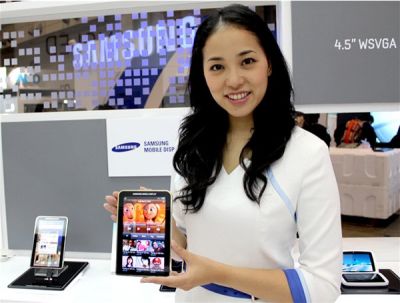 A 7-inch Super AMOLED prototype
A 7-inch Super AMOLED prototype
According to my sources, Samsung managed to achieve HD resolution on these small displays by using PenTile matrix again (like in the original Super AMOLED displays). They have also developed a new manufacturing process and are using new materials. It might be that they have finally started to use Universal Display's green PHOLED (we reported that Samsung is using a green phosphorescent in their new 5.5-Gen plant, but perhaps they will only start using it in the HD displays).
Super AMOLED HD to use PenTile technology?
There are rumors that Samsung is set to release a new Galaxy S II variant (code named Celox) with LTE. The interesting bit is that it is said that this phone will sport Samsung's new Super AMOLED HD display rather than the Super AMOLED Plus used in regular S II phones - and that Super AMOLED HD will use PenTile matrix again.
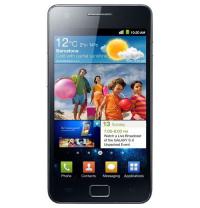 Galaxy S II
Galaxy S II
So if Samsung goes back to PenTile, this might explain the resolution increase, although it will still be unrealistic to expect an HD (1280x800) resolution on a 4" display - even with PenTile, as Samsung will not be able to move beyond 200ppi using their current FMM technology. In any case, it seems rather unlikely for Samsung to go back to this technology after telling us that normal matrix is better in Super AMOLED Plus displays...
Cnet - Super AMOLED Plus is pretty much the same as Super AMOLED
Cnet posted an interesting story comparing the Galaxy S II Super AMOLED Plus display and the Galaxy S Super AMOLED. They say that viewing them normally, they can't really tell them apart (beside the fact that the Galaxy S II's display is larger - 4.3" vs 4"). On both screens, text was clear and colors in images were extremely rich.
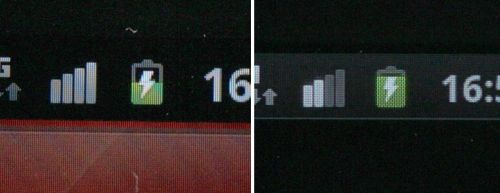
SAP (left) vs SA (right)
Looking closely, you see a slight difference - because of the PenTile technology of the Super AMOLED (which Samsung no longer uses in the Super AMOLED Plus display). Interestingly, when Engadget reviewed the S II, they said that the Super AMOLED Plus is "nothing short of spectacular" and that it may be the best mobile display on the market.
Engadget reviews the Galaxy S II, says the Super AMOLED Plus is nothing short of spectacular
Engadget posted a very positive review of the Samsung Galaxy II, saying that this is the best Android smartphone, and it might well be the best smartphone today. Regarding the 4.3" Super AMOLED Plus displays, they say that the screen is nothing short of spectacular. Great contrast and colors and supreme viewing angles.
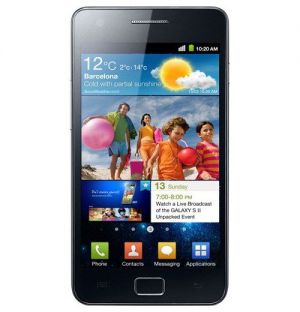
"We'd even go so far as to say it's better than the iPhone 4's screen, purely because, at 4.3 inches, it gives us so much more room to work with. It's almost impossible to split the two up in terms of quality of output, they're both top notch.". Engadget says that the original Super AMOLED displays exhibited slightly grainier images due to the PenTile matrix, but the new Plus displays (which use a real-stripe matrix) has great resolution and detail. The new display also has got rid of the oversaturated colors. The only down side of the screen is the auto-brightness feature (but that has nothing to do with the OLED...).
Super AMOLED Plus resolution - further details
We've got new details about the resolution of Samsung's Super AMOLED Plus. Super AMOLED Plus drops the PenTile matrix used in Samsung's previous generation AMOLEDs, and so have 50% sub pixels (see explanation here). This causes it to be clearer, but actually each pixel is a bit larger and so a 4.3" Super AMOLED Plus display features the same resolution as a 4" Super AMOLED.
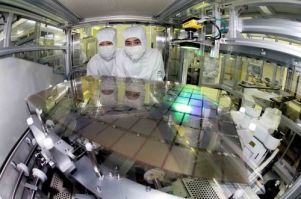
But we were also told that Samsung will produce Super AMOLED Plus at higher resolutions - and achieve over 300ppi. Today we learned that Samsung plans to move from Fine-Metal-Mask (FMM) technology to laser-induced thermal imaging (LITI). This will enable them to achieve much higher resolutions. We do not know when they plan to actually start using LITI, but when they do they'll be able to produce displays with much higher resolutions (on par with Apple's Retina-Display).
Super AMOLED Plus resolution explained
Update: We have some new information about Samsung's AMOLED manufacturing process. It turns out that they plan to soon move to a laser-based method (LITI) from the currently-used shadow-mask method (FMM). This will allows them to achieve 300ppi or more...
Earlier today we posted about the Super AMOLED plus resolution - and now we got our answer. It turns out that my calculations about the pentile matrix were incorrect - it fact it uses 2 sub-pixels for each pixel while a 'real' RGB matrix (or Real-Stripe as Samsung calls it) uses 3 sub-pixels for each pixels - and here's your 50% increase. Here's Samsung's own image showing the difference:
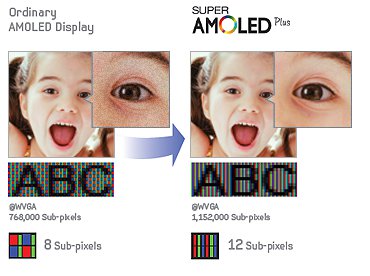
It also turns out that a Real-Stripe matrix also takes up more space per pixel. This explains why a 4.3" display that uses Real-Stripe has the same resolution as a 4" with a penTile matrix. But this display should actually be clearer because of the added sub-pixels and better matrix design.
Super AMOLED Plus updates
Update: It turns out that the new manufacturing process that is discussed here is LITI (currently they use FMM). More details here!
We've got some interesting updates about Samsung's upcoming Super AMOLED Plus displays. We know that Samsung said that the new displays feature 50% more sub-pixels, and today we confirmed that Samsung no longer uses Pentile matrix in the new displays - which is great news - they are using regular RBG. Samsung's new manufacturing process allows them to reach over 300ppi - which is comparable to the iPhone 4 "Retina Display" (which features 326ppi).
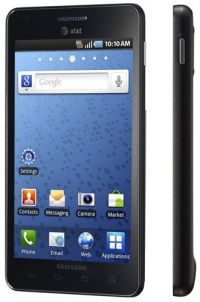 Samsung Super AMOLED Plus display
Samsung Super AMOLED Plus display
The last bit of information is regarding the OLED materials - it turns out that Samsung aren't using a Green Phosphorescent material yet. The Super AMOLED Plus displays (like the first-gen Super AMOLED) use just a Red Phosphorescent with a Green and Blue Fluorescents.
Why didn't apple use an AMOLED display for the iPhone 4G?
Pagination
- Previous page
- Page 4
- Next page



